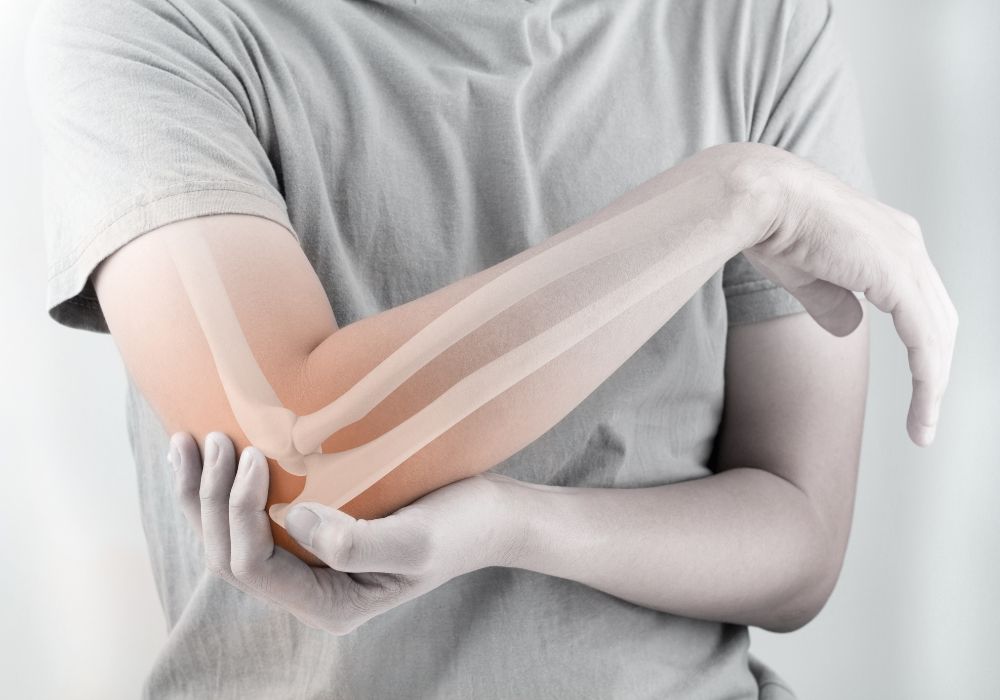Osteoporosis
What it is?
Osteoporosis is a condition characterized by weak and brittle bones. It occurs when the body loses too much bone, makes too little bone, or both. This leads to decreased bone density and an increased risk of fractures.
When it occurs?
Osteoporosis typically occurs in older adults, especially women after menopause. However, it can also occur in younger individuals who have certain medical conditions or who take certain medications that can weaken bones.
Causes
Factors that increase the risk of developing osteoporosis include a family history of the condition, a small frame, low body weight, smoking, excessive alcohol consumption, a sedentary lifestyle, and certain medical conditions such as rheumatoid arthritis and celiac disease.
Symptoms
Osteoporosis is often called a silent disease because it progresses slowly and does not cause symptoms until a fracture occurs. Common sites for fractures caused by osteoporosis include the spine, hip, and wrist. Fractures can result in pain, loss of height, and a hunched posture.
Prevention
Prevention and treatment of osteoporosis involve lifestyle modifications, such as regular weight-bearing exercise, a diet rich in calcium and vitamin D, avoidance of smoking and excessive alcohol consumption, and fall prevention measures. Medications may also be prescribed to reduce bone loss or increase bone density.
Diagnosis
Early detection and treatment of osteoporosis are essential to prevent fractures and complications associated with the condition. A bone mineral density test, called a dual-energy X-ray absorptiometry (DXA) scan, is commonly used to diagnose osteoporosis and assess the risk of fractures.
Conclusion
In conclusion, osteoporosis is a common condition characterized by weak and brittle bones that can lead to fractures. It is important to take preventive measures and seek appropriate treatment to manage this condition and reduce the risk of complications.
When it occurs?
Osteoporosis typically occurs in older adults, especially women after menopause. However, it can also occur in younger individuals who have certain medical conditions or who take certain medications that can weaken bones.
Causes
Factors that increase the risk of developing osteoporosis include a family history of the condition, a small frame, low body weight, smoking, excessive alcohol consumption, a sedentary lifestyle, and certain medical conditions such as rheumatoid arthritis and celiac disease.
Symptoms
Osteoporosis is often called a silent disease because it progresses slowly and does not cause symptoms until a fracture occurs. Common sites for fractures caused by osteoporosis include the spine, hip, and wrist. Fractures can result in pain, loss of height, and a hunched posture.
Prevention
Prevention and treatment of osteoporosis involve lifestyle modifications, such as regular weight-bearing exercise, a diet rich in calcium and vitamin D, avoidance of smoking and excessive alcohol consumption, and fall prevention measures. Medications may also be prescribed to reduce bone loss or increase bone density.
Diagnosis
Early detection and treatment of osteoporosis are essential to prevent fractures and complications associated with the condition. A bone mineral density test, called a dual-energy X-ray absorptiometry (DXA) scan, is commonly used to diagnose osteoporosis and assess the risk of fractures.
Conclusion
In conclusion, osteoporosis is a common condition characterized by weak and brittle bones that can lead to fractures. It is important to take preventive measures and seek appropriate treatment to manage this condition and reduce the risk of complications.
Patient Testimonials
Orthoderm brings a wealth of knowledge, a depth of understanding, and a shared commitment to patient-centered care.

I have recently got the knee surgery done for my mother. It was a complex surgery but it went very well. Thanks to Dr. Anish for being so supportive and making it easier for us. He is very humble, always very patient in addressing all the queries. He spends lot of time in explaining, providing every necessary details and ensuring the patient is ready and comfortable.
Manish Agrawal

Consulted him for my mother’s frozen shoulder. He gave her an injection which was completely painless and she instantly got relief. He took time to explain all the exercises and precautions. He listened to us patiently and gave answers to all possible questions. Highly recommended.
Karishma Konwar

Consulted sir for my mothers knee pain / osteoarthritis. Sir suggested PRP for my mother’s knee pain, we thought it would be painful. But there was no pain and only after 15 days of injection, she feels much better now.
Hirak Jyoti Sarmah

I have recently got the knee surgery done for my mother. It was a complex surgery but it went very well. Thanks to Dr. Anish for being so supportive and making it easier for us. He is very humble, always very patient in addressing all the queries. He spends lot of time in explaining, providing every necessary details and ensuring the patient is ready and comfortable.
Manish Agrawal

Consulted him for my mother’s frozen shoulder. He gave her an injection which was completely painless and she instantly got relief. He took time to explain all the exercises and precautions. He listened to us patiently and gave answers to all possible questions. Highly recommended.
Karishma Konwar
Contact Dr. Anish Agarwalla
Orthoderm brings a wealth of knowledge, a depth of understanding, and a shared commitment to patient-centered care.

